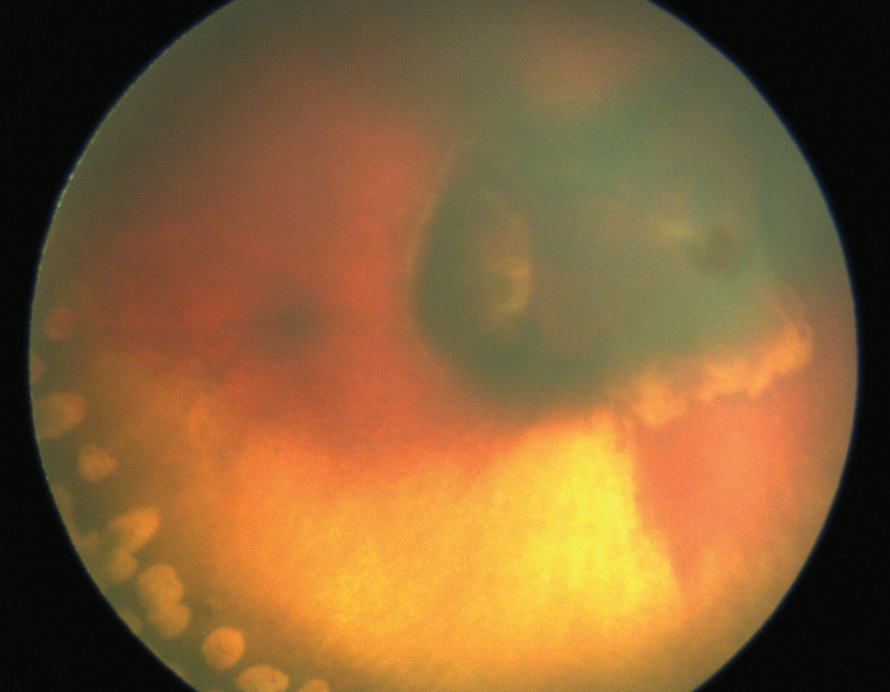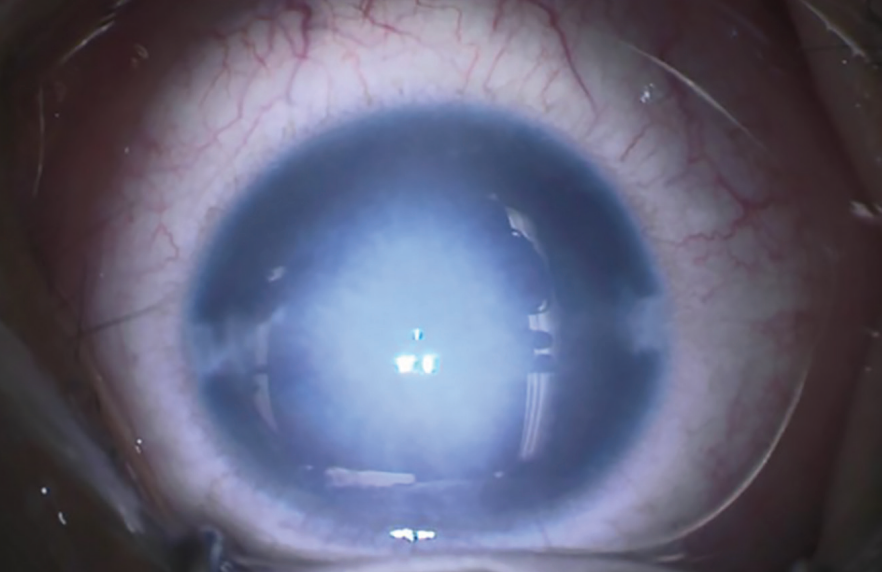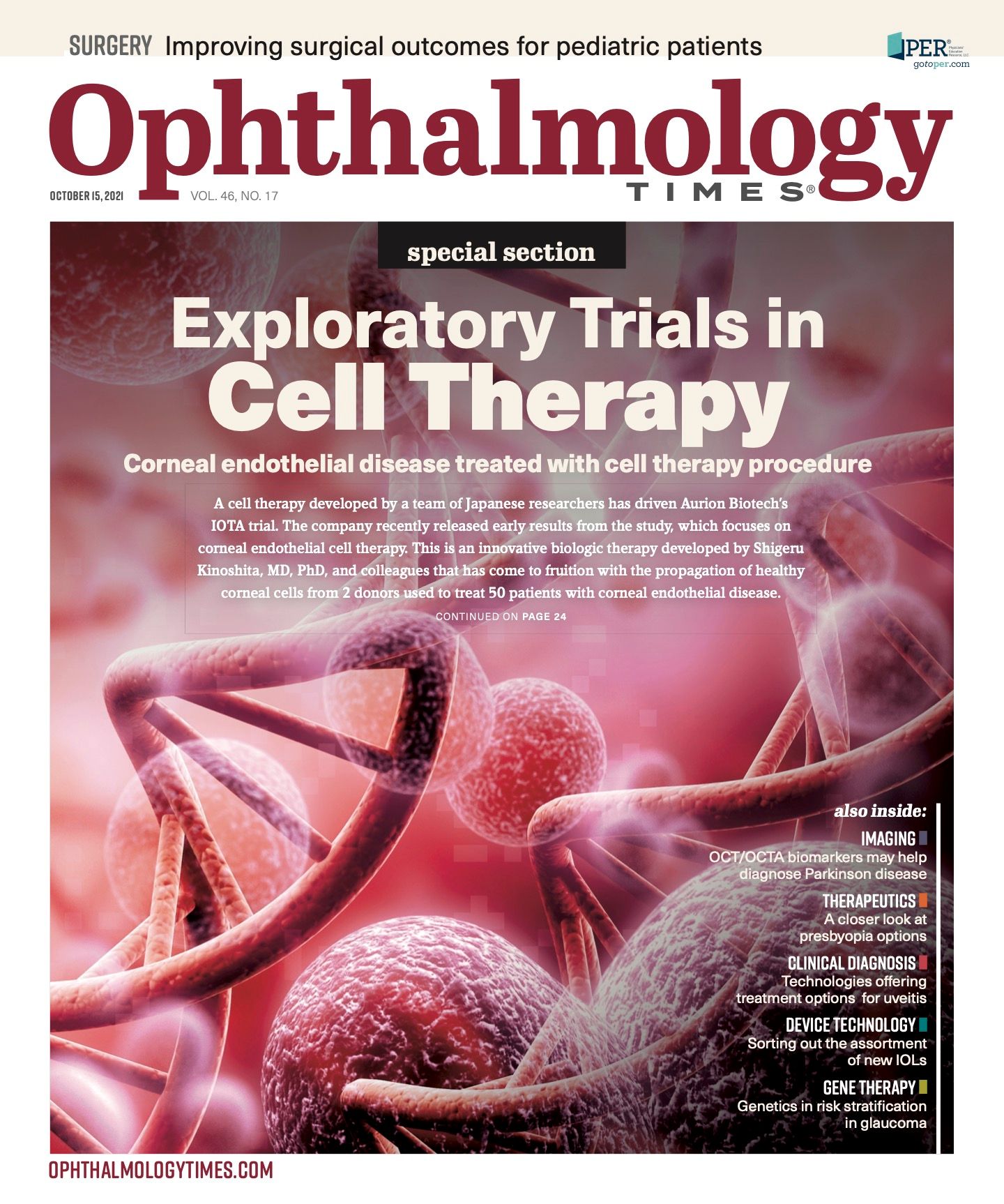Publication
Article
Digital Edition
Improving surgical outcomes for pediatric patients
Author(s):
Techniques, technologies minimize complications and guide counseling, care.
Alexander

Reviewed by Janet L. Alexander, MD
Several innovations are revolutionizing surgical care in pediatric ophthalmology, according to Janet L. Alexander, MD.
Speaking at the Women in Ophthalmology 2021 Summer Symposium, Alexander presented a series of rapid-fire cases to discuss 4 innovations affecting multiple subspecialities of pediatric ophthalmology.
Related: It takes a village to beat visual system diseases in children
The innovations included prenatal surgical planning to address congenital hereditary disease, endothelial keratoplasty, endocyclophotocoagulation (ECP) to treat refractory glaucoma, and ultrasound biomicroscopy (UBM) as a tool for guiding complex cataract surgery.
Fundus photo 1 month following laser treatment for Norrie disease. (Images courtesy of Janet L. Alexander, MD)

Prenatal surgical planning
A case involving a child born with Norrie disease highlighted the value of prenatal surgical planning for allowing intervention prior to complications.
During her second trimester of pregnancy, a 30-year-old woman presented with carrier status for NDP mutation.
Amniocentesis confirmed fetal NDP mutation and the ultrasound showed no fetal retinal detachment. Labor was induced at 34 weeks gestation for early retinal treatment.
The child received a diagnosis of Norrie disease and bilateral vitreous hemorrhages at birth and underwent bilateral treatment with intravitreal anti-VEGF therapy and peripheral retinal laser.
Six months later, both eyes demonstrated robust light perception vision with an attached retina.
Related: Physicians finessing the pediatric eye examination
Cornea opacity is seen in a DSAEK case.

Alexander, an assistant professor of ophthalmology and pediatrics at the University of Maryland School of Medicine in Baltimore, noted that the case is a reminder that it is never too early to start prenatal surgical planning.
“Prenatal surgical planning requires proactive and timely genetic testing to identify surgical candidates, counseling for women carriers of high-risk genetic traits, and involvement of geneticists and genetic counselors,” she said.
Pediatric endothelial keratoplasty
Benefits and drawbacks of descemet stripping automated endothelial keratoplasty (DSAEK) vs penetrating keratoplasty (PK) were discussed through a case involving a 4-year-old child who presented with a cloudy cornea 2 years after undergoing cataract surgery.
The child received a diagnosis of bullous keratopathy and underwent DSAEK.
“Compared to PK, DSAEK is associated with stronger wound integrity, less astigmatism, and faster visual recovery. It also avoids the need for stripping of the host endothelium in pediatric eyes,” Alexander said. “However, DSAEK graft positioning can be very difficult in pediatric patients, and complications such as graft folds, detachment and dislocation, pupillary block, endothelial immune rejection, and steroid response can occur.”
Related: Collagen crosslinking provides corneal stability in young patients
ECP for glaucoma
Advantages can also be cited for choosing ECP vs transscleral ciliary ablation to treat refractory glaucoma in pediatric patients.
Alexander presented a case involving a 7-year-old child who had sustained a traumatic cataract, then presented with 20/250 vision and elevated IOP despite maximal medical treatment, selective laser trabeculoplasty, and goniotomy.
The most remarkable feature of ECP is that it is minimally invasive and has a more favorable safety profile compared with the transscleral technique.
“For example, phthisis in the absence of retinal detachment occurs in over 30% of eyes treated transsclerally but in less than 1% of eyes that undergo ECP,” Alexander said.
Other advantages of ECP include avoidance of late infectious complications, such as wound leak and endophthalmitis.
Related: Physicians finessing the pediatric eye examination
However, ECP has a modest success rate, and its benefit is somewhat short-lived.
Outcomes data show that it effectively reduces IOP in about 30% of eyes, and about half of those eyes maintain IOP control for 1 to 2 years. In addition, ECP is not devoid of serious complications—hypotony, retinal detachment, and vision loss can occur.
Imaging for pediatric cataract
Preoperative evaluation with ultrasound biomicroscopy enables cataract surgery planning and helps avoid intraoperative surprises, according to Alexander.
Alexander demonstrated these points with several case examples. In one case, a 1-month-old child presented with bilateral cataract, but cataract surgery was postponed for 3 months while the child underwent treatment for comorbid heart failure.
Repeat imaging prior to the scheduled cataract surgery showed that crystalline lens thickness had decreased dramatically over time.
Knowledge of the absorbed cataract guided appropriate surgical techniques, Alexander said.
Related: Physicians measure contrast sensitivity in patients with cataract
“Cataract surgery planning with UBM allows surgeons to evaluate IOL position, the lens periphery, and the ciliary body,” she said. “Importantly, it allows us to avoid surprises, including absorbed cataract, foreign bodies, masses, cysts, or membranes.”
Other cases involving uveitic cataracts showed how imaging with UBM can document pathology that can complicate cataract surgery and inform the surgical approach.
Alexander presented a series of eyes in which UBM revealed the presence of a cyclitic membrane, pupil synechiae, and calcified plaque on the anterior capsule.
Alexander concluded that quantitative UBM is an innovation that further enhances the clinical utility of UBM.
Quantitative UBM uses algorithms to analyze the images and generates information that helps clinicians interpret the images.
Related: A patient’s eye movements can unlock diagnosis
The algorithms are also capable of suggesting clinical diagnoses and prognostic features, such as the risk of complications.
--
Janet L. Alexander, MD
E: jalexander@som.umaryland.edu
Alexander has no related relevant financial interests to disclose.

Newsletter
Don’t miss out—get Ophthalmology Times updates on the latest clinical advancements and expert interviews, straight to your inbox.




